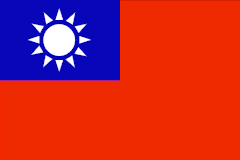Austronesian Taiwan: Linguistics, History, Ethnology, Prehistory, (Berkeley, CA: Phoebe A. Hearst Museum, University of California 2000) edited by David Blundell is an excellent introduction to the study of the origin and spread of the indigenous people of Taiwan into the Pacific. Any scholar interested in studying a competing theory to the popular idea that Polynesian people moved directly from mainland China to the Philippine Islands and beyond would find Dr Blundell’s book to be the natural place to start. The book itself is made up of contributions by scholars from various fields in the study of indigenous Taiwan peoples. There are chapters from anthropologists, professors of linguistics, archaeologists, ethnologists, musicologists and historians, among others. While there is a great deal of information and some provocative theories contained within this book, some readers may find themselves distracted by passages of inelegant prose written by authors for whom English is not their first language.
Dr Blundell is from California and received his PhD from UCLA in Anthropology after extensive undergraduate and masters’ level studies of Asian languages and cultures. He took a teaching position at National Taiwan University in 1984 and soon after began conducting research in Formosan groups, prehistory, and socio-linguistic mapping. The contributors to Austronesian Taiwan provided papers to the “Austronesian Studies in Taiwan: Retrospect and Prospect” conference that took place in Berkley in late October 1997. Dr Blundell then edited these submissions, some of which were in their original languages, and compiled them into this volume.
The central thesis of this book is that Taiwan is the historical home for all Austronesian people who speak Formosan and Malayo-Polynesian (MP) languages. Dr Blundell gathers evidence from many academic disciplines to support this thesis, but the most compelling arguments are linguistic and archeological. For example, the MP languages in evidence from Madagascar to Easter Island share sentence structures, accents and words with the many Formosan languages indigenous to Taiwan. However, the Formosan languages of Taiwan have larger and more varied vocabularies and display more distinctive features from one another than do the MP languages from the Formosans. The implication is that the MP languages are much younger and are descended from the languages in Taiwan.
The second compelling argument for Taiwan being the locus of the Austronesian peoples is the archaeological record of “red slipped” pottery in Oceania. The pottery suddenly appears on these islands with no archeological precursor around 2000 BC. In contrast, there is a voluminous archaeological record with regional variation on the island of Taiwan for more that 2000 years previous to the appearance of this Oceania pottery. When the pottery evidence is viewed in tandem with the linguistic evidence, it would appear that some people who working with pottery and speaking an Austronesian language departed from southern Taiwan to the next nearest islands of the northern coast of Luzon in the Philippines. The descendants of those people then migrated further out into the Pacific and to Southeast Asia.
Dr Blundell and his contributors had to deal with the alternative theory that Austronesian peoples launched directly from the Southeastern coast of China towards Luzon then curled back up at some later date into Taiwan. The counter to this theory is the Penghu Islands archaeological record. These small islands in the Taiwan Straits have an archaeological record that predates that of both Taiwan and of Oceania but is more recent than that on mainland China. This timeline comports with the theory that these proto-Austronesian people hopped from the mainland to the next nearest islands, the Penghu, as a response to ecological or demographic pressure. From there, the descendants of these people hopped to Taiwan, stayed a few thousand years, then moved onto the Philippines.
The information and arguments presented in the book are compelling, as far as they go. However, advances in DNA analysis of rat bones found throughout Southeast Asia and Oceania as well as further Y-chromosome and mitochondrial analysis of the indigenous peoples of the Pacific and southeastern Asia will answer many of the questions left by the conjecture-based linguistic and archaeological evidence in this volume. Determining the actual pattern of migrations in southeastern Asia and Oceania will allow for more informed assessments of the historical and pre-historical evidence. Austronesian Taiwan is a valuable contribution for students of southeastern Asian history.
Sunday, May 04, 2008
Review of Austronesian Taiwan: Linguistics, History, Ethnology, Prehistory
Posted by
TO
at
5/04/2008 10:42:00 AM
0
comments
![]()
Subscribe to:
Posts (Atom)

